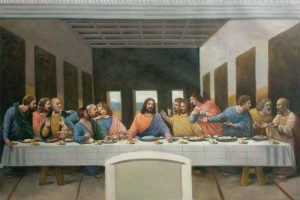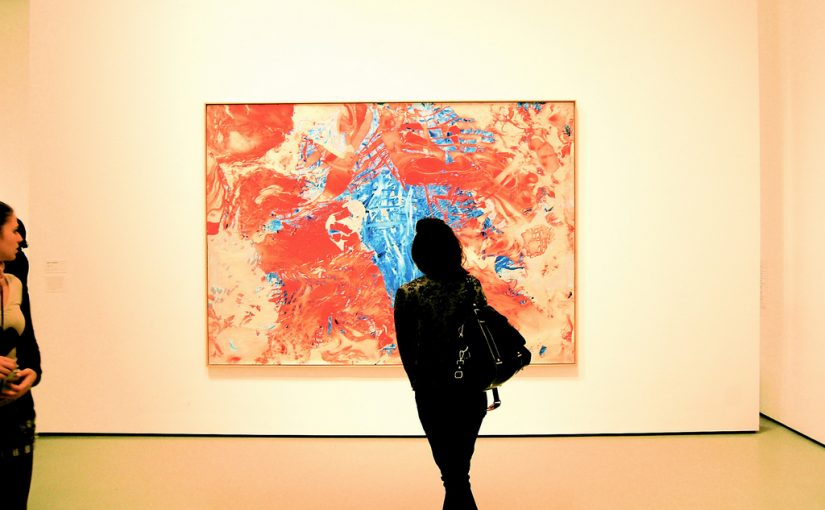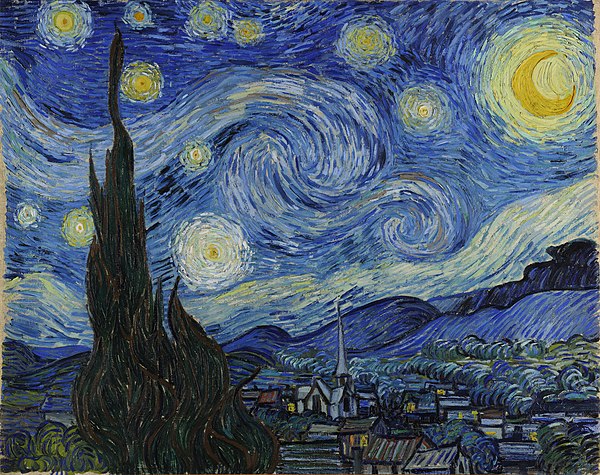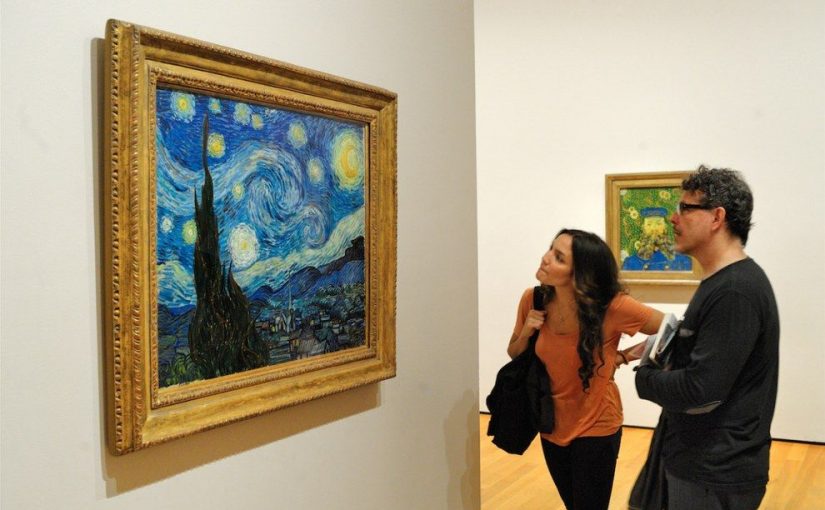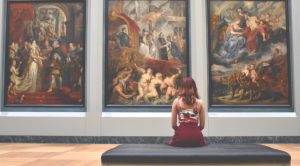
What is formal analysis? In your own words explain what we mean when we say formal analysis and what its components are.
Formal Analysis is an approach to interpret any work of art. Through Formal analysis the audience becomes aware of both visual and physical conditions of the piece. The use of this method helps enhances the audiences understanding of the piece through color, line, space and mass, and scale. When looking at color one must look at the different hues being used and the value (lightness) of the color. One must also interpret lines by noticing how continuos or broken they are, soft or hard, and where they may be directing towards. Analyzing the space created within a painting and the illusion of any weight inside the painting or the actual weight of a sculpture gives a sense of space and mass. It is also essential to analyze the artist use of scale as they may use the element in different ways by using a larger canvas or make a larger sculpture to emphasize the importance of the subject more specifically in cases where the subject may be political figures, gods, portraits of important individuals, or mythical figures. when an artist incorporates all the elements into a piece it creates a composition and well rounded painting/ sculpture. Adding on to the elements of formal analysis, contextual analysis also plays an important role because it may give a historical background to the piece.

